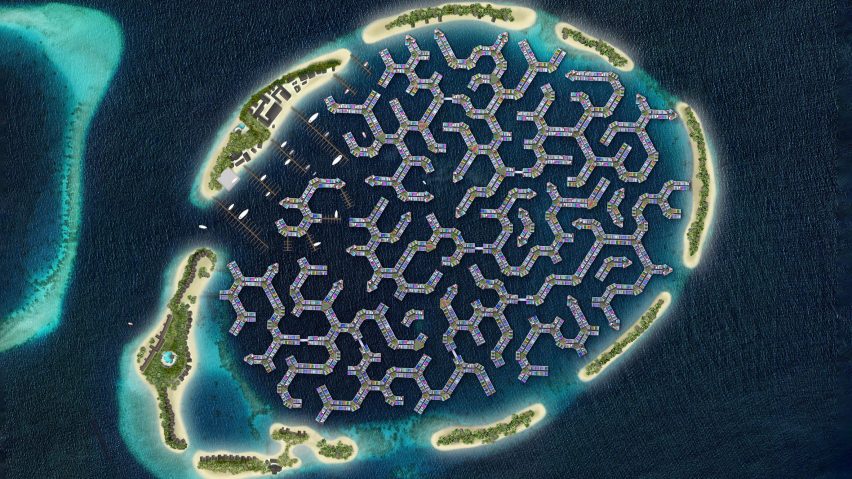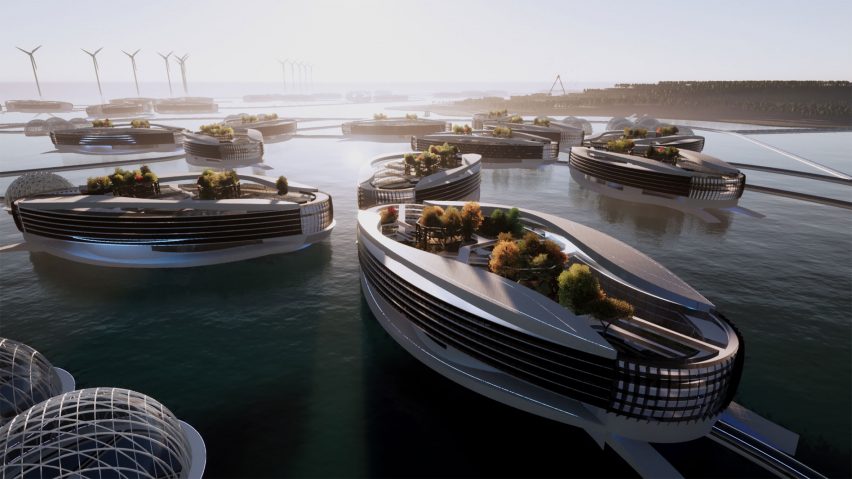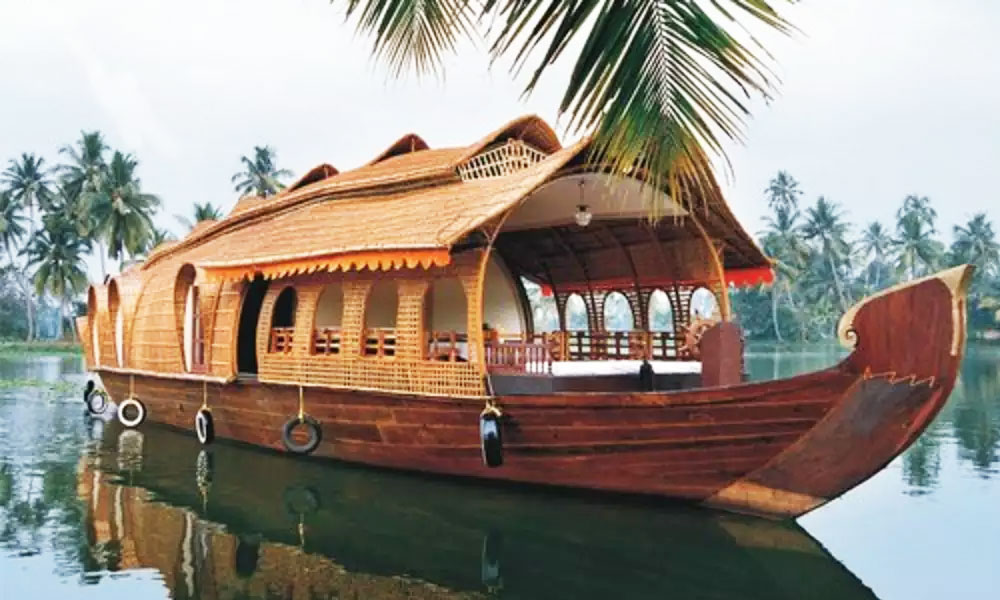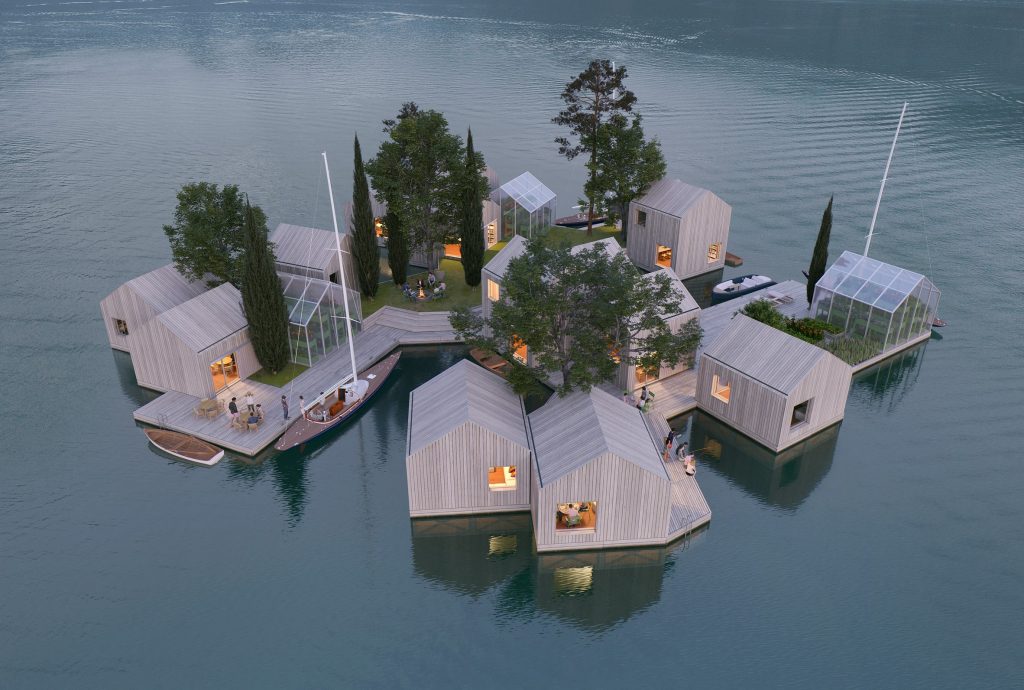Floating architecture refers to the buildings and other structures intended to float on water. This building is frequently found in watery settings like rivers, lakes, and coastal regions. Creating flexible and adaptable spaces, tackling issues associated with rising sea levels, or simply investigating creative and sustainable design concepts are some of the motivations for creating floating structures.
Floating cities are a solution because of our expanding population and need for more area for residences and buildings. Sea and river levels have risen due to climate change, such as global warming. Seventy per cent of the Earth is submerged under water. Water-friendly construction will, therefore, be a strong option and become increasingly necessary in the future.
Architectural advances address expanding needs, and the relationship between environmental deterioration and population increase has been discussed and contested for many years. Metropolitan areas are proliferating, and the anticipated increase in population is forcing these cities to keep growing by enlarging their borders.
The Floating architecture
The most prevalent type of floating building is houseboats. These are dwellings explicitly made to float on water. They might have straightforward, conventional looks or opulent, contemporary models with cutting-edge features. There are floating houses that are permanently moored in an aquatic environment but may not have the mobility of houseboats. These dwellings are built to endure the particular difficulties of being on the water.
Residential structures are not the only examples of floating architecture. To address the problems posed by climate change and increasing sea levels, several urban planners and architects have looked at floating cities designed to float on the water; these cities would offer a solution for frequently flooding places. A distinctive touch to their surroundings, floating pavilions, museums, and other buildings have been constructed as temporary or permanent installations in bodies of water.

It is necessary to choose materials that are buoyant, strong, and resistant to water damage while designing floating constructions. Engineers and architects frequently investigate cutting-edge materials and construction methods to build stable, sustainable floating architecture. Creating floating architecture with sustainability in mind is possible; waste management programmes, renewable energy sources, and other environmentally beneficial elements can be incorporated into buildings.
The History of Floating Architecture
The idea of floating buildings is not new to the globe; it dates back to 480 BC when King Xeres of Persia used two rows of floating bridges supported by boats to lead his army across the Hellespont. Chinese cultures created stilts, built fishing communities, and created floating gardens in areas with vast waterways. Numerous bridges of this type were built worldwide by lashing boats, ships, and wooden decks. It quickly developed into floating homes from these floating decks: floating villages with fully operational marketplaces and residential areas can be found in several nations. As time passed and new methods and concepts emerged, floating boathouses helped shape entire cities and neighbourhoods.
Chinampas are artificial islands made of mud and plant stuff that the Mesoamerican Aztecs built on Lake Texcoco for agricultural purposes. The Totora reed was used by the Uros people of Lake Titicaca, Peru, to make floating islands in South America. Venice is well known for its floating buildings and waterways. Wooden pilings support churches and palaces across the city hammered into the swampy terrain. Living on the water has long been a tradition in Vietnam and Thailand. In these areas, traditional houseboats and floating marketplaces are typical. For millennia, Japan has utilised “funaya,” or floating buildings. These are traditional fishing cottages with boat storage constructed on the water.

In Bangladesh, water hyacinths and other plants are used to build “baira,” or floating gardens. These gardens offer a sustainable food source and aid in the fight against flooding. Houseboats gained popularity in industrialised nations during the 19th and 20th centuries. They were frequently utilised as permanent or holiday homes.
Certain areas have created floating buildings like platforms and homes that can rise with the sea level to avoid damage. Thanks to technical developments and sustainable design, architects have investigated floating architecture for various residential, commercial, and recreational projects. Floating cities have been conceptually designed to address population growth and rising sea levels. Both cutting-edge technologies and environmental methods are included in these designs. Floating buildings themselves are already a new type of architecture, and there are a lot of possibilities in terms of sustainability and green building.
The Future of Floating Architecture
Rather than being a theory, floating architecture might be presented as a creative response to the issues posed by climate change in the built environment. Floating architecture has the potential to provide a new aesthetic and link the built environment and offshore renewable energy. It’s comfortable and creative to live and work by the water.
Billionaire Peter Thiel cofounded the Seasteading Institute over ten years ago, providing seed money for developing the first floating metropolis in history. Oceanix Metropolis is the first sustainable floating city; it would essentially be groups of hexagonal platforms moored to the seabed that could each house roughly 300 people, effectively establishing a community for 10,000 citizens.
As architects and designers explore creative solutions to diverse problems and unique opportunities, floating architecture’s future is full of fascinating possibilities. Anticipate a significant focus on sustainability through integrated waste management systems, renewable energy sources, and environmentally friendly materials in floating constructions.

It’s conceivable that conceptual concepts for floating cities will attract more interest. These cities could deal with issues including land scarcity, overcrowding, and the effects of climate change on coastal locations. Floating constructions will be agile and adjustable thanks to modular building techniques. These modular designs are simple to assemble, take apart, and rearrange to suit shifting requirements.
Using cutting-edge technologies like the Internet of Things, the floating architecture’s efficiency, safety, and connectivity will be improved. This covers water purification, intelligent energy management systems, and real-time environmental status monitoring. Floating parks, gardens, and leisure areas may increase and provide communities with more green spaces and places to unwind.
Innovative agricultural techniques like hydroponics and aquaponics, which promote sustainable food production in urban water environments, can be implemented using floating structures. Floating resorts, hotels, and eateries may increase and provide tourists with unusual and engaging experiences. These buildings might be planned to offer breathtaking views and entry to submerged worlds.
It may be possible to investigate designs that combine submerged and floating components, establishing centres for conservation, marine research, and underwater exploration. In isolated or underdeveloped places, floating architecture could supply housing, healthcare, and educational facilities.
Discovering Excellence: Sanjay Puri Architects and the Art of Innovative Design






